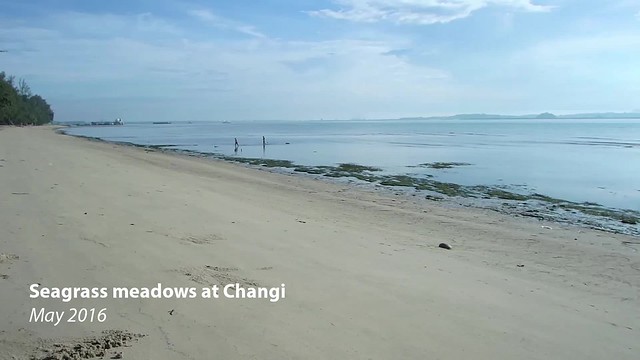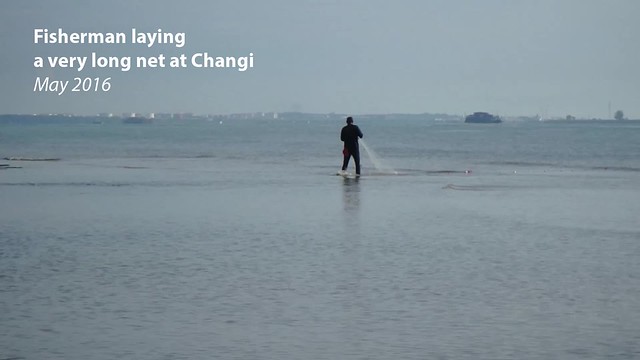Scorching as Marcus and I survey the seagrass meadows of Changi during a good low tide that happens after sunrise.
Although the seagrasses are doing well, and teems with life, I feel there is a dwindling variety of marine life here.
This shore lies beneath the flight path from Changi Airport, so the roar of planes fill the air almost constantly.
Almost the entire shore was covered with seagrasses. Mostly Needle seagrasses and Spoon seagrasses and they were lush and not bleaching. There were only small patches of Fern seagrass and in many of them, there were only the central stem bare of leaflets.
Here's a video clip of the extent of the seagrass meadows. But most of it is not exposed except for very low spring tides.
The seagrasses here are teeming with life. Here's a video clip of some of the ones that were seen today.
Life and death struggles occur quietly on the shore. Like this Great Escape by a Big brown mactra clam from a Noble volute.
Pink warty sea cucumbers were the most abundant sea cucumber on the shore. There were much fewer Thorny sea cucumbers. Other animals seen included a few small Garlic bread sea cucumbers, Orange striped hermit crabs, several small Knobbly sea stars, one Haddon's carpet anemone and only one White sea urchin. I didn't see any Biscuit sea stars, although Marcus saw some. There were fewer variety and number of animals compared to our last survey in Sep 2015. In Jul 2015 when I already noticed that this shore has changed and we no longer see many of the creatures that we saw in Jun 2013.
It's rare for a good low spring tide to happen after sunrise. So it wasn't surprising to see many people on the shore this morning. There was one group from NUS, and another group with an NParks survey. Our survey team was just me and Marcus. Although Jonathan, Yong Jen and Dayna were with the NUS team.
Towards the end of the tide, much of the seagrass meadows near the high shore are heavily trampled. But I know our shores are quite tough. As long as we don't keep trampling the same spot repeatedly, it should recover after some time.
There are some deep furrows on some parts of the shore. Are they dugong feeding trails?
As the tide turned, I watched a man lay a very long net on the shore. It appears that he laid it almost to the high shore.
Here's a video clip of the man laying the long net in several parts. If such long nets are laid regularly, I wonder what kind of impact it has on the marine life? Dugongs breathe air and will drown if they are trapped in a net.
There were also two people collecting marine life. One focused on Mactra clams, the other on Gong-gong snails. On the one hand it's nice to know our shores are rich enough for people to forage. On the other, unmanaged harvest can have long term impacts on the ecosystem.
Marcus Ng shared photos of lots of things that I missed.











